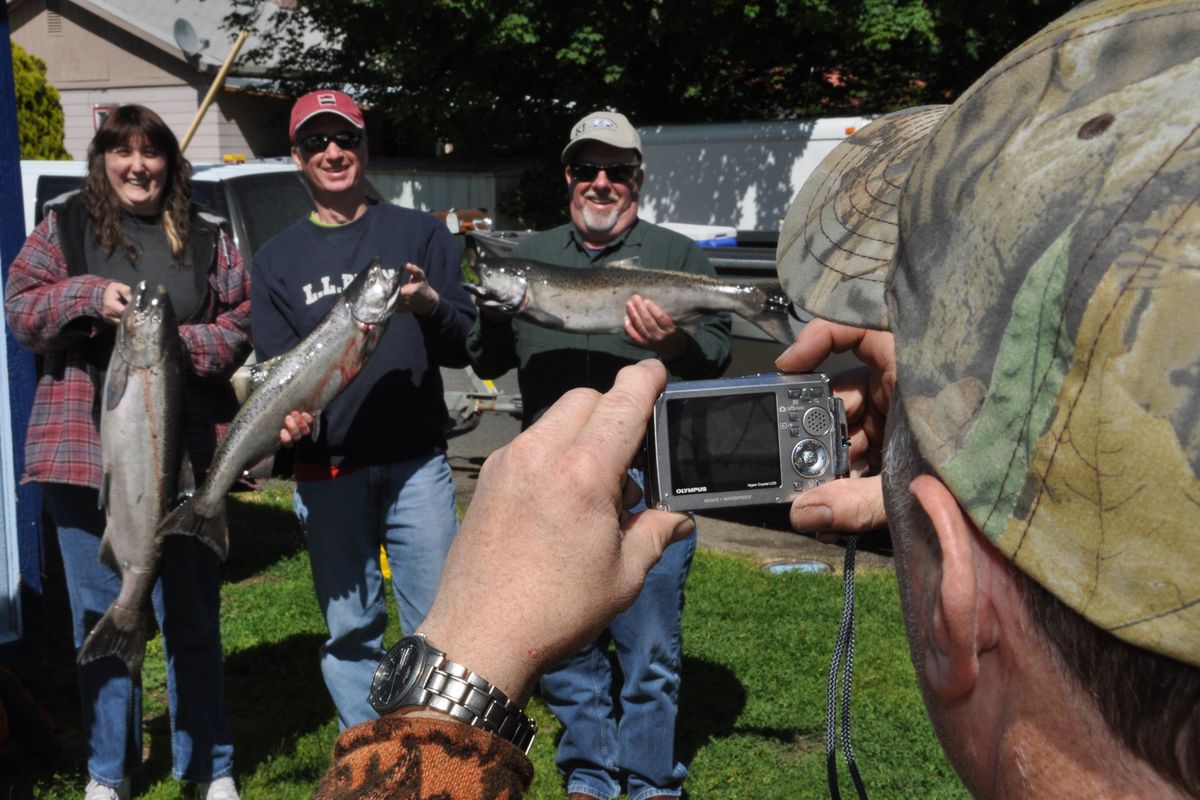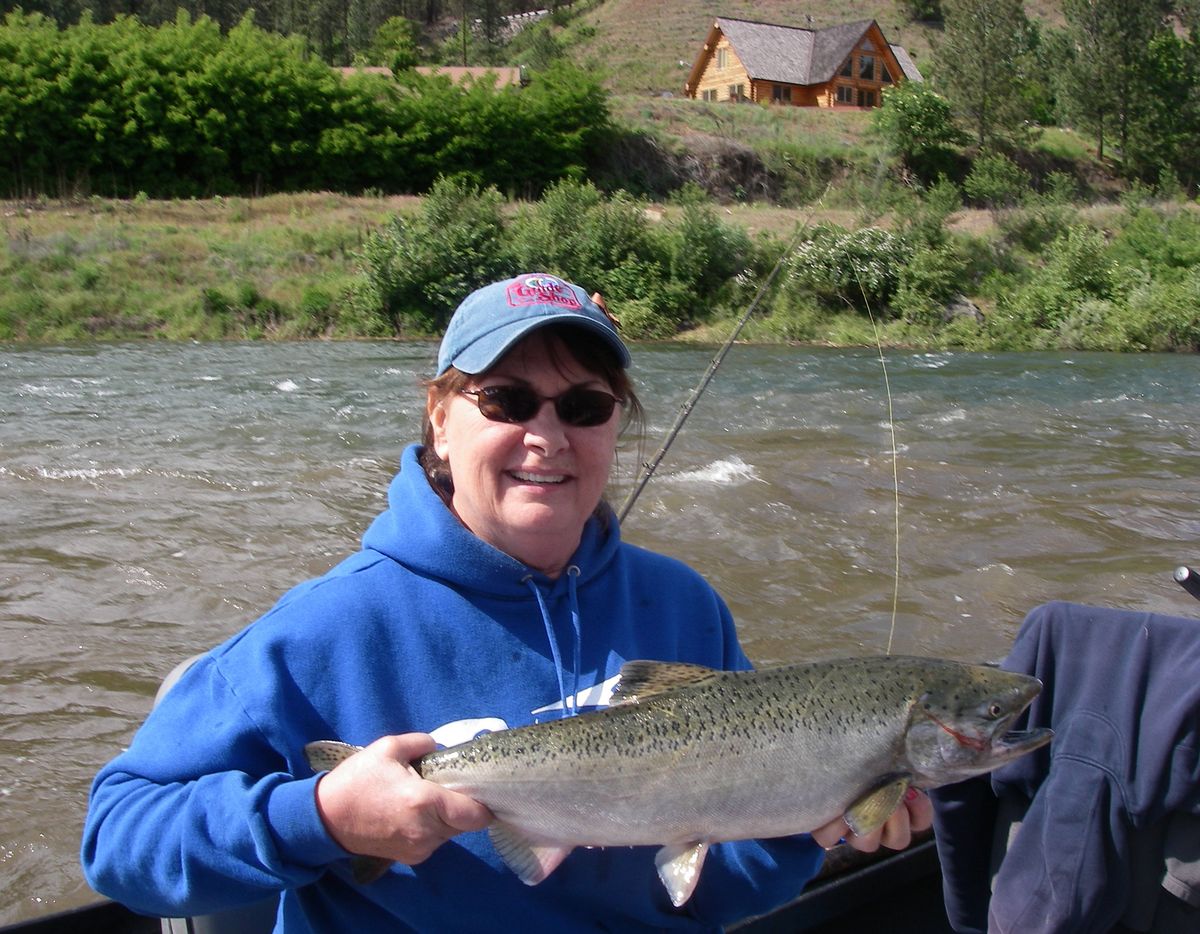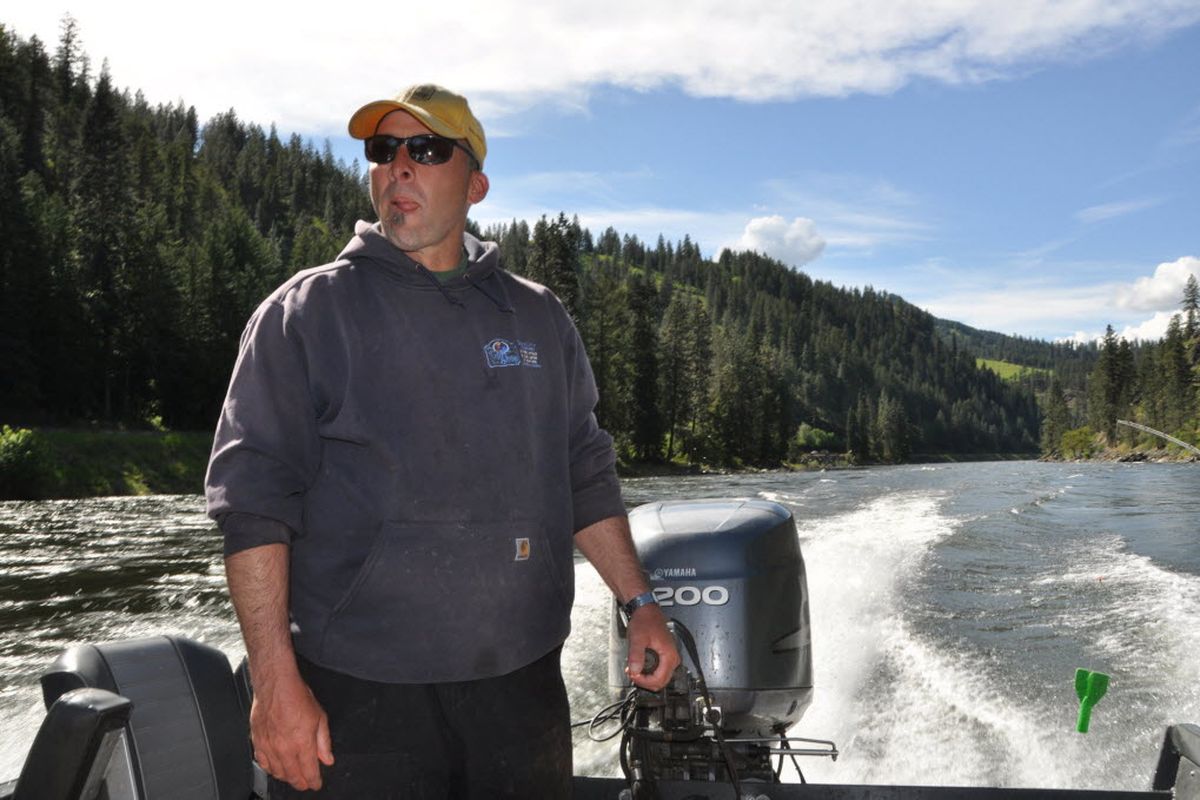Woman anchors The Guide Shop 20 years to tap Clearwater River fishing
Kip Fry has worked 18 years as a salmon and steelhead fishing guide based out of The Guide Shop in Orofino, Idaho. (Rich Landers)
Orofino, Idaho, has quite a few things going for it along U.S. Highway 12. The spring chinook are en route this week via the Clearwater River. The steelhead will be swimming there from the Pacific Ocean this summer.
Of course, where fish go, fishermen follow.
For 20 years, anglers coming to Clearwater County have been welcomed and ushered to the best big-fish runs by Evelyn Kaide, owner of The Guide Shop.
The mother of three children and grandmother of four also oversees up to six fishing guides during the May-June spring chinook season and up to 14 guides during the late August-March steelheading season.
“I’m a little bit like a mother hen
waiting for her chicks to come home,” she said. “I don’t go anywhere until my last boat is back in for the day.”
Kaide, 67, and her former husband were hunting outfitters based in Challis for 20 years before they diversified into Orofino-based fishing in 1992 to give their guides year-round work.
“I’ve done the safety training in the boats and all that, but what I enjoy is being in the shop, booking and taking care of clients and hiring really good guides – the kind you’d think were born with a tiller in their hand,” she said.
Idaho offers more stability for outfitters than some neighboring states. Kaide said she welcomes Idaho’s outfitting rules and requirements for training and safety.
“Not just anybody can go out and buy a guide license,” she said, noting that licensing and criteria must be met. “Idaho designates outfitter territories so places don’t get overrun.”
The main change in her two decades in the Clearwater River sport fishing industry is the number of people fishing.
“The fish have generated a lot of interest along the shore and on the water,” she said. “We see a lot of the clients we’ve taken out coming back with their own boats. Then sometimes they still come back with us. There’s always something to learn from a guide who’s on the river day after day.”
Another big change during Kaide’s tenure on the river stems from the fish hatcheries that paved the way for the restoration of spring chinook salmon seasons starting in 1997.
“We have long-haul truckers who call ahead to see if the fish are in so they can take a break here,” she said. “The fish were late this year, but they’re here now.”
Kaide compares her guides to a litter of Labrador retrievers: “They’re all different. Good ones are hard to find, but when I do, boy, I hang on to them.”
She said she likes them to be individuals, but she also has some expectations. “They’re all clean,” she said. “They might smell like fish when the day is done, but they’re clean.”
Kip Fry of Lenore, Idaho, has been guiding with Kaide for 18 years.
“I’ve worked around Idaho and Alaska, but Evelyn is such a pleasant lady to work with and the Clearwater is special,” he said. “With this river, we run from salmon season into steelhead season with barely a month off, so a guide doesn’t have to be constantly traveling and chasing the fish.”
He said Kaide mostly leaves guides to be themselves, but she emphasizes some philosophies that have kept her business running in a cutthroat field.
“She doesn’t expect her guides to catch all the fish in the river, but she wants everybody to have a good day,” Fry said. “It’s something she learned from her 40 years in the outfitting business.
“I’ve heard her say, ‘It’s not just our river; it belongs to everybody.’ “
Guiding fishermen is similar to being a farmer who has to deal with what nature delivers.
“We control everything we can,” she said. “We take care of our gear, the bait, and learn all the techniques, but we never know when a river will blow out with mud or something. We try to call clients and reschedule when conditions are bad.”
Even when conditions are ideal, the number of salmon or steelhead running 465 miles up the Columbia and Snake rivers and into the Clearwater varies.
“Some years are better than others, but most of the time it’s very good,” she said.
“When everyone’s catching fish, everyone is happy. But when the fishing is tough, it pays to be out with a guide who knows where the fish are and how to catch them.
“I expect the guides to have their equipment in good shape and to be knowledgeable and courteous,” she said. “I tell them to go out and have a really good time with their clients, make sure they enjoy the eagles and other things about the river.
“I tell them to realize these people are hiring a guide for one of several reasons: they don’t have the boat and gear to do it on their own or they don’t have the expertise to catch fish regularly. Either way, they’re not hiring a guide to be abused.”
Montana-based guide Scott Willumsen said Kaide’s No. 1 priority is that her guides get everyone back home safely.
“Beyond that, as long as everyone’s happy, she’s happy,” said Willumsen, who’s guided the spring and fall fish runs for Kaide for nine years.
Having guided in several states, he say he finds a comfort zone at The Guide Shop.
“Most places, guides are just sub-contractors who meet clients and take them fishing,” he said. “Down here, we’re all a big family.”
Kaide gets a kick out of watching her “brood” of guides function.
“I’d say they act like brothers, but they get along a lot better than that,” she said. “They all have the good attitude every day that they’re going to catch fish. Sure, every now and then one of them gets skunked, and he gets ribbed about it. But they all know it could happen to them sooner or later.
“They do a lot of sharing where they found fish and what they were doing to catch them.”
Kaide invests herself so much in the office and community, she rarely gets out on the water anymore, said Dawn Padilla, who works in the shop.
“But she and her daughter got out (Tuesday) and caught a 22-pounder. The fish are coming in. That makes everyone happy.”


